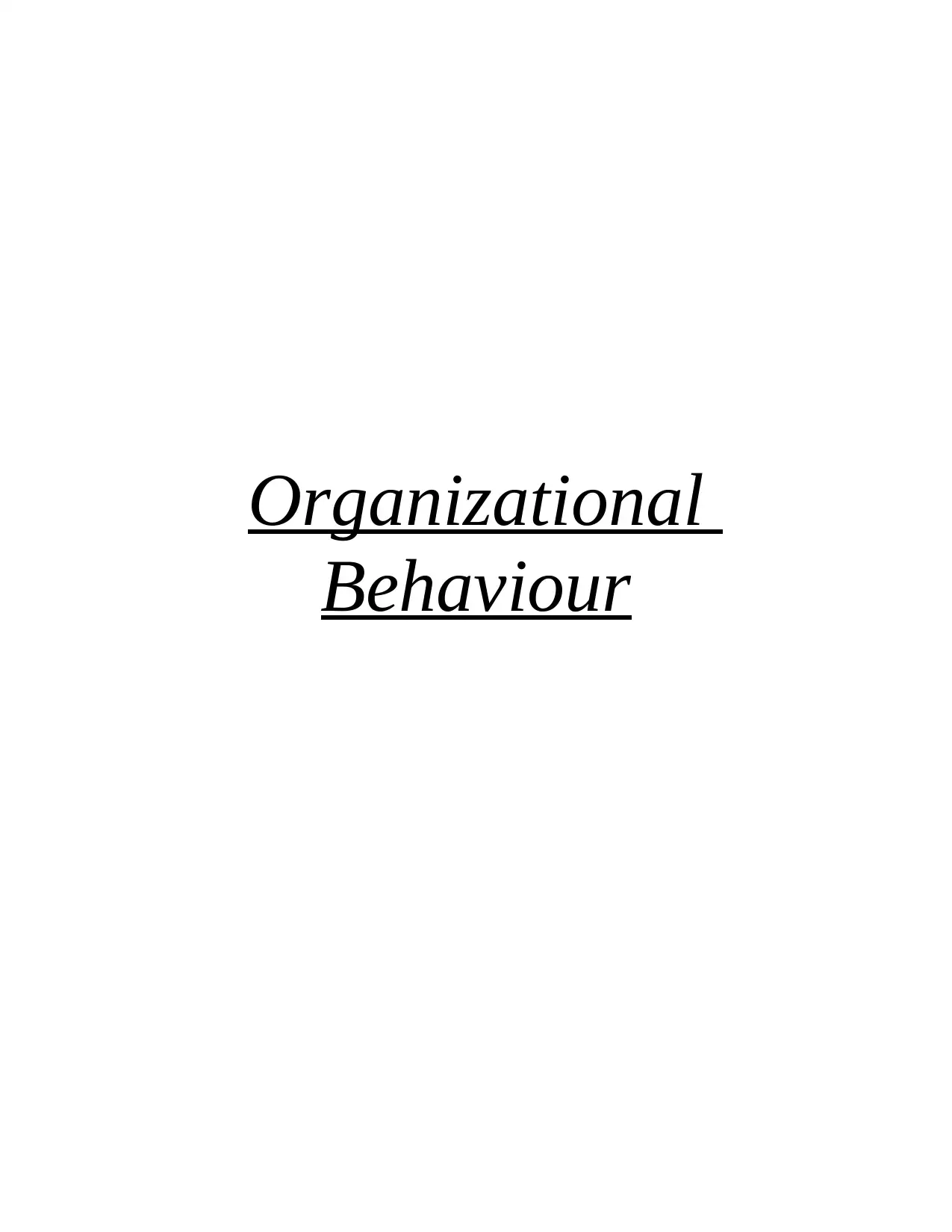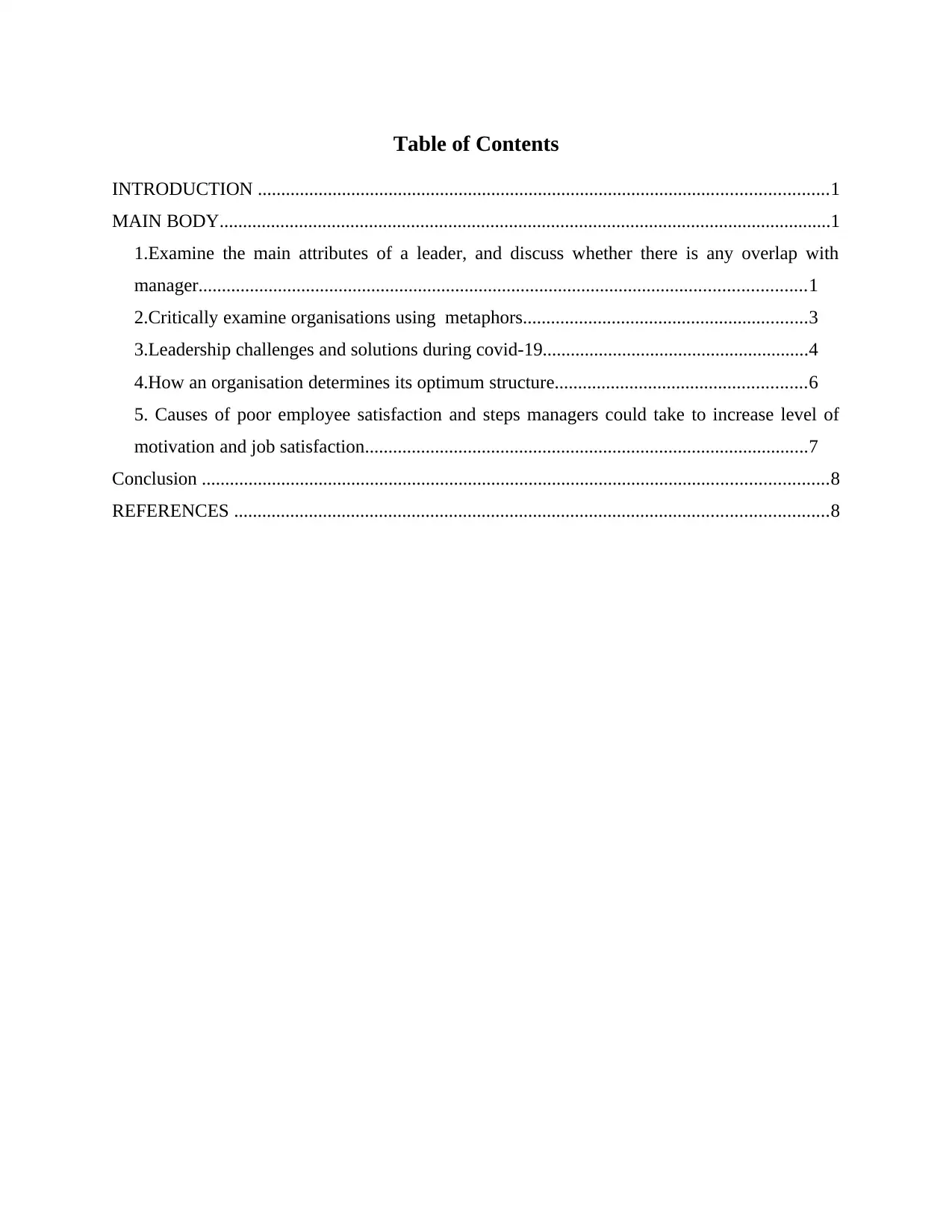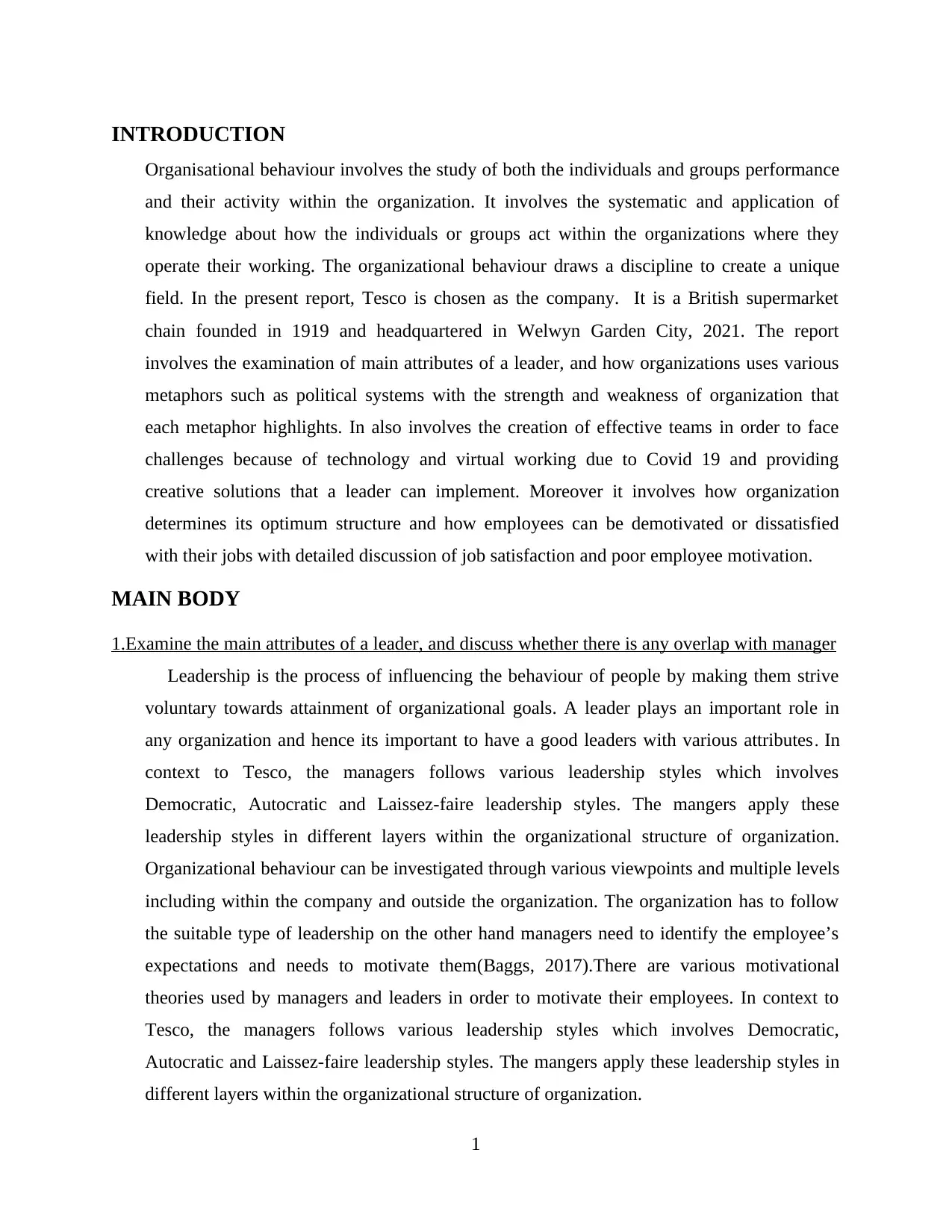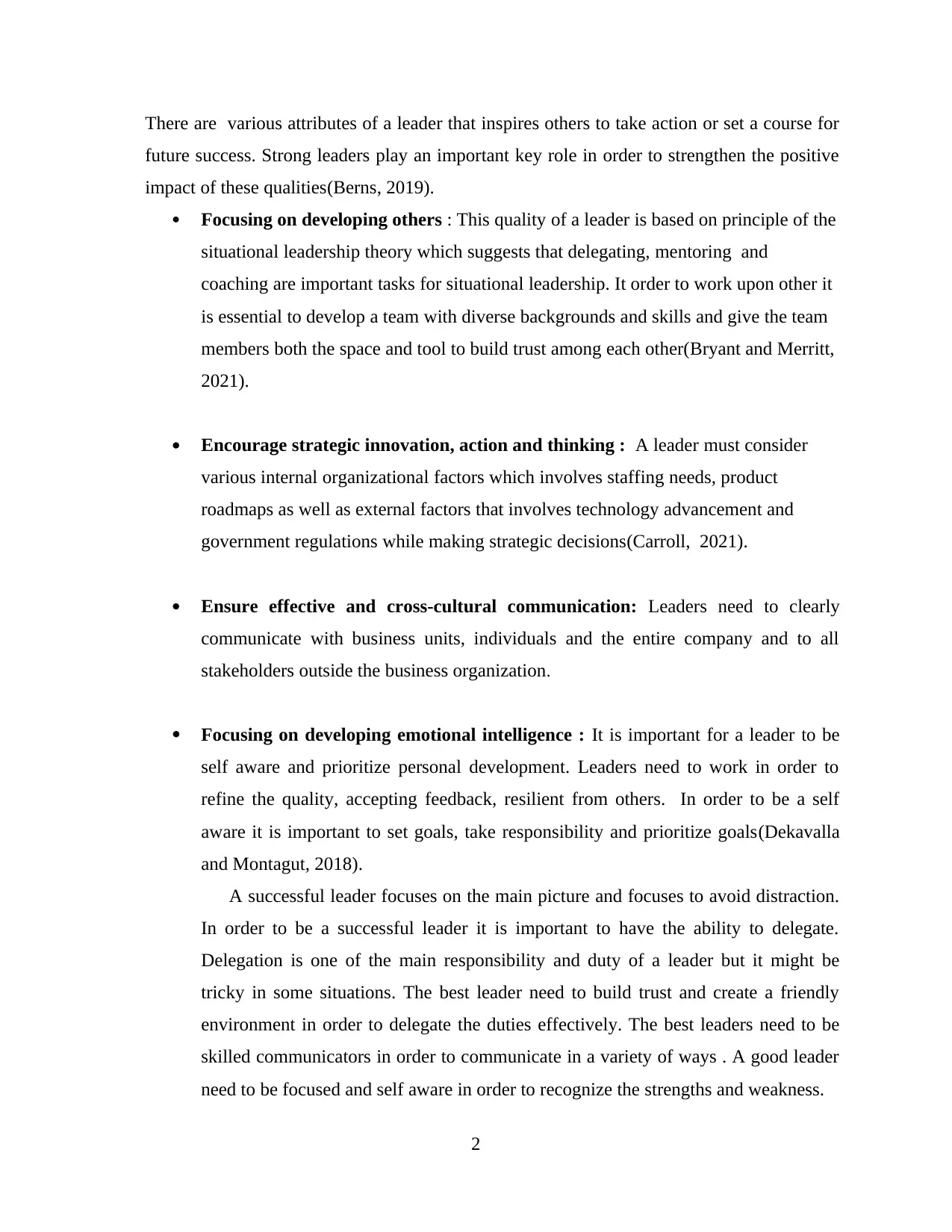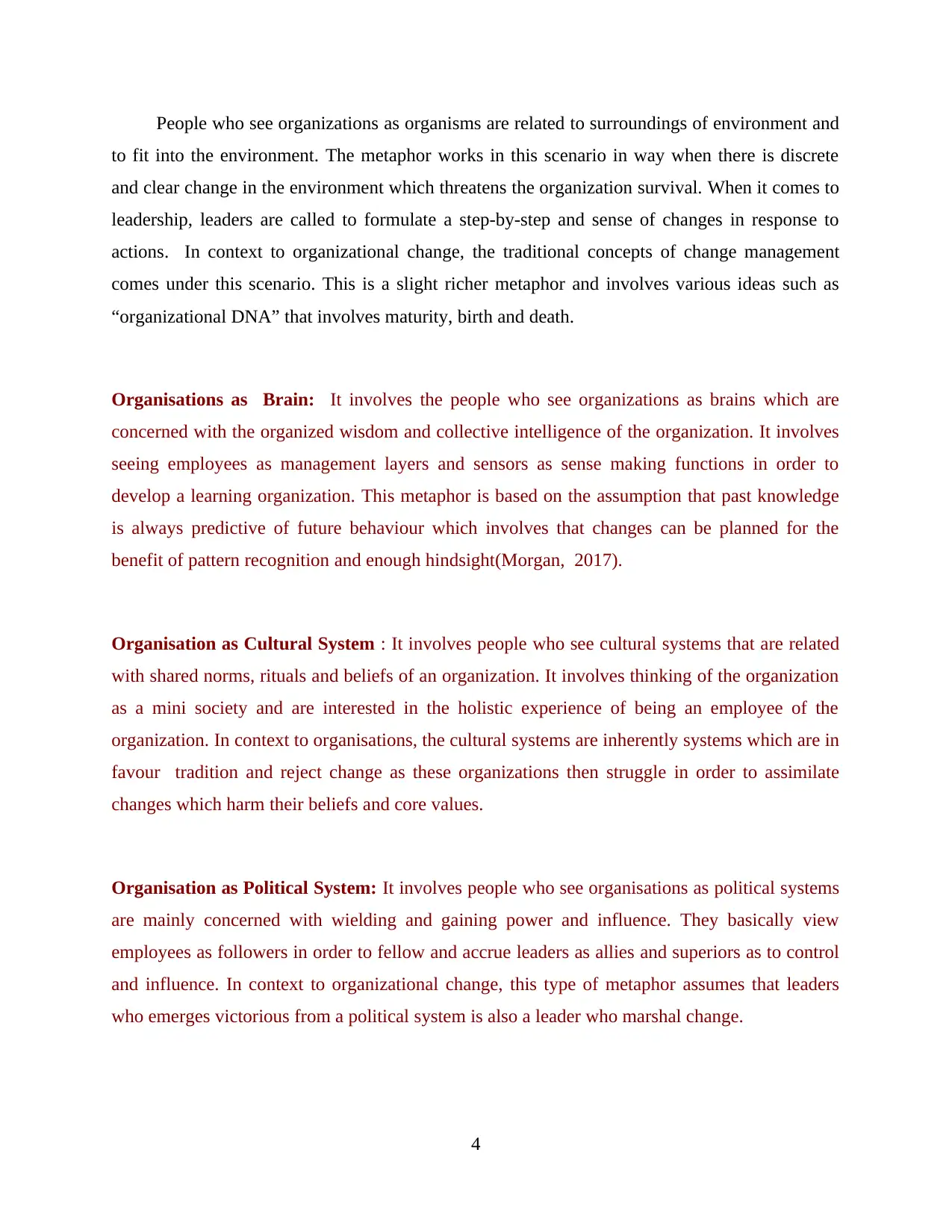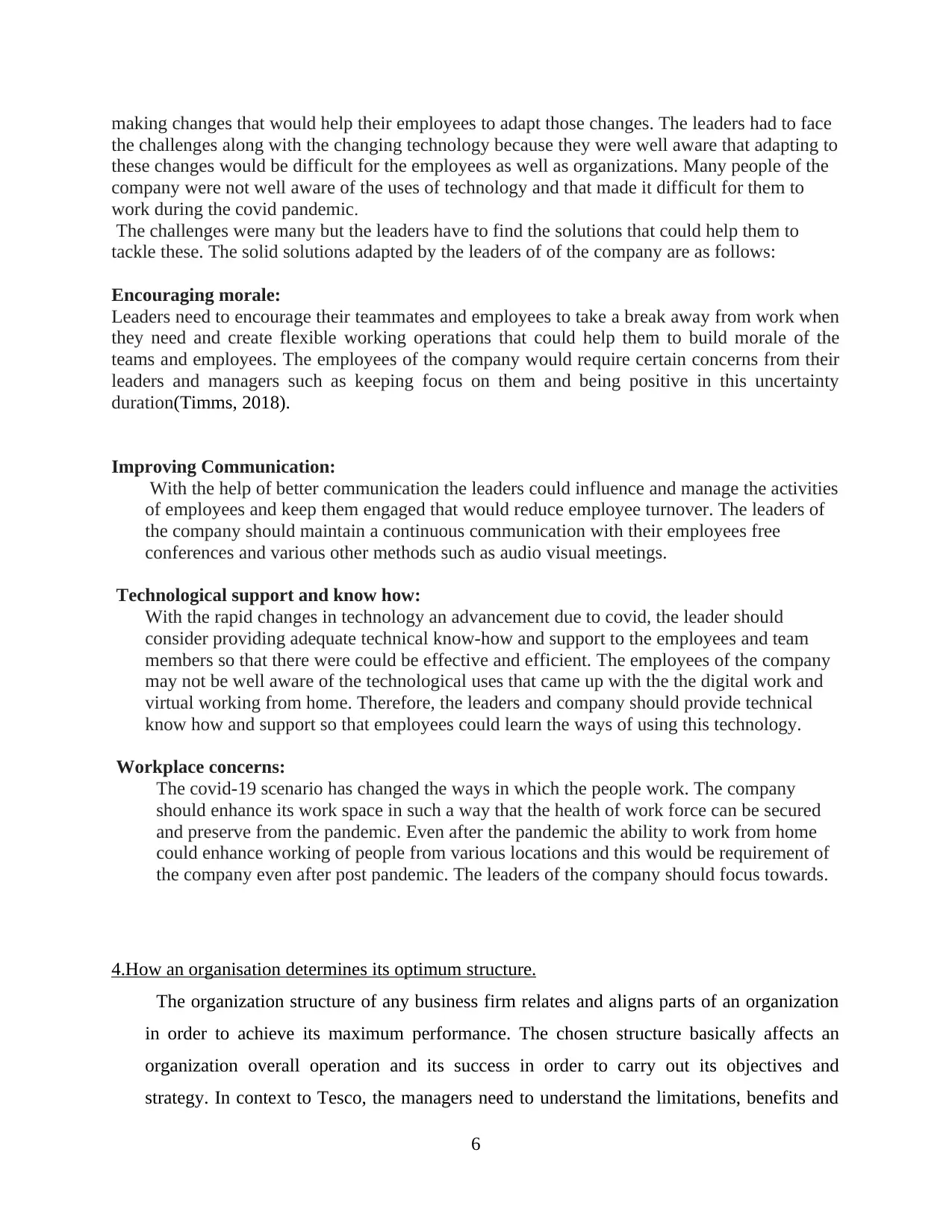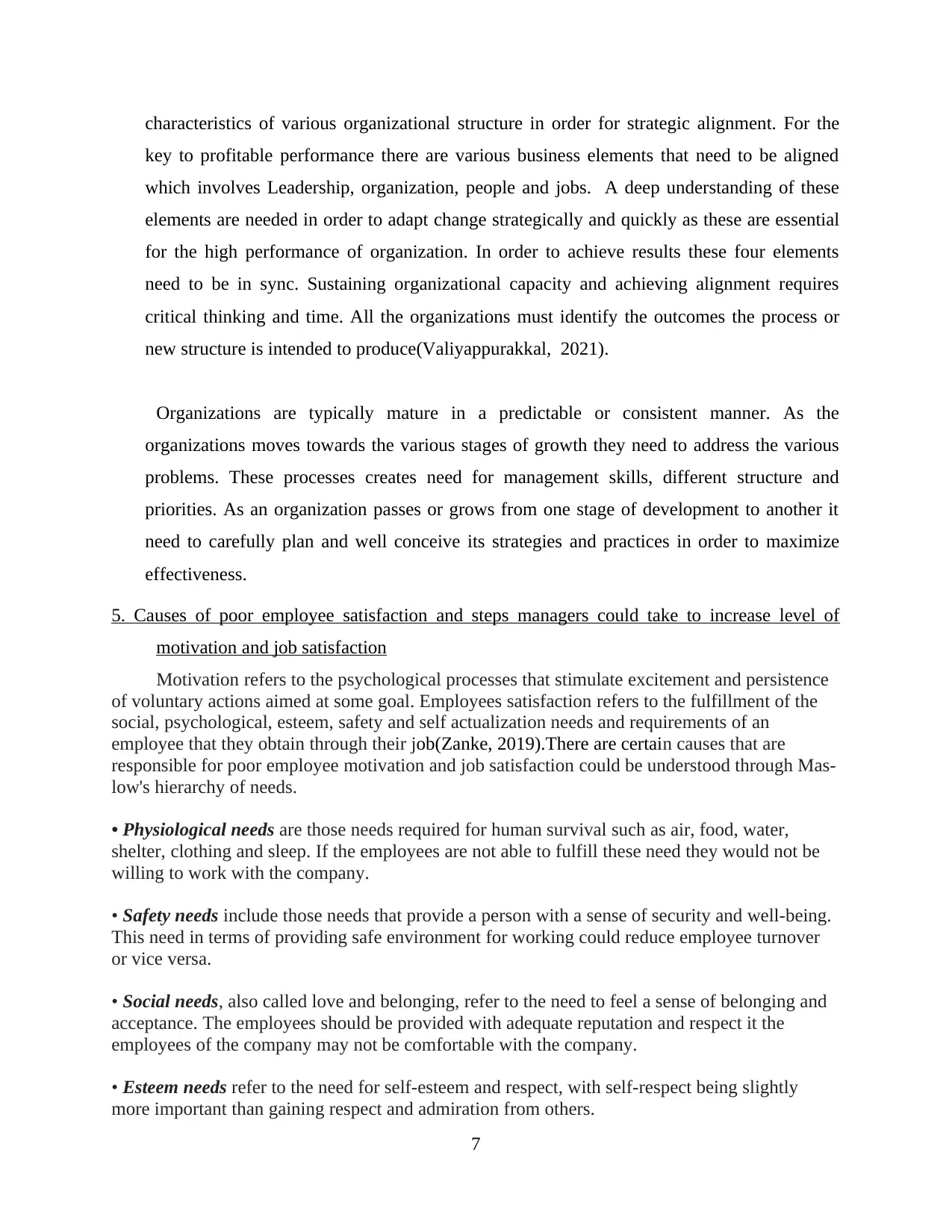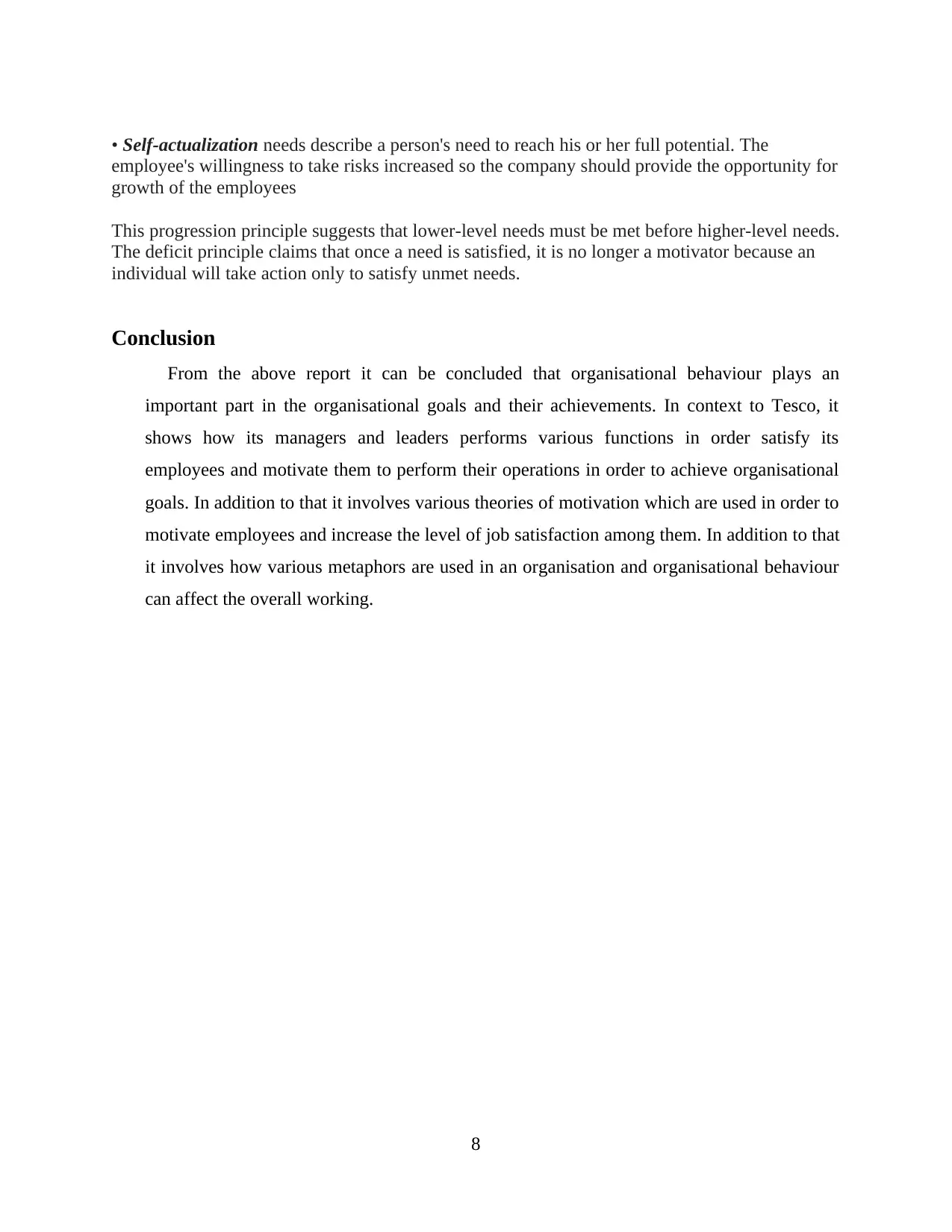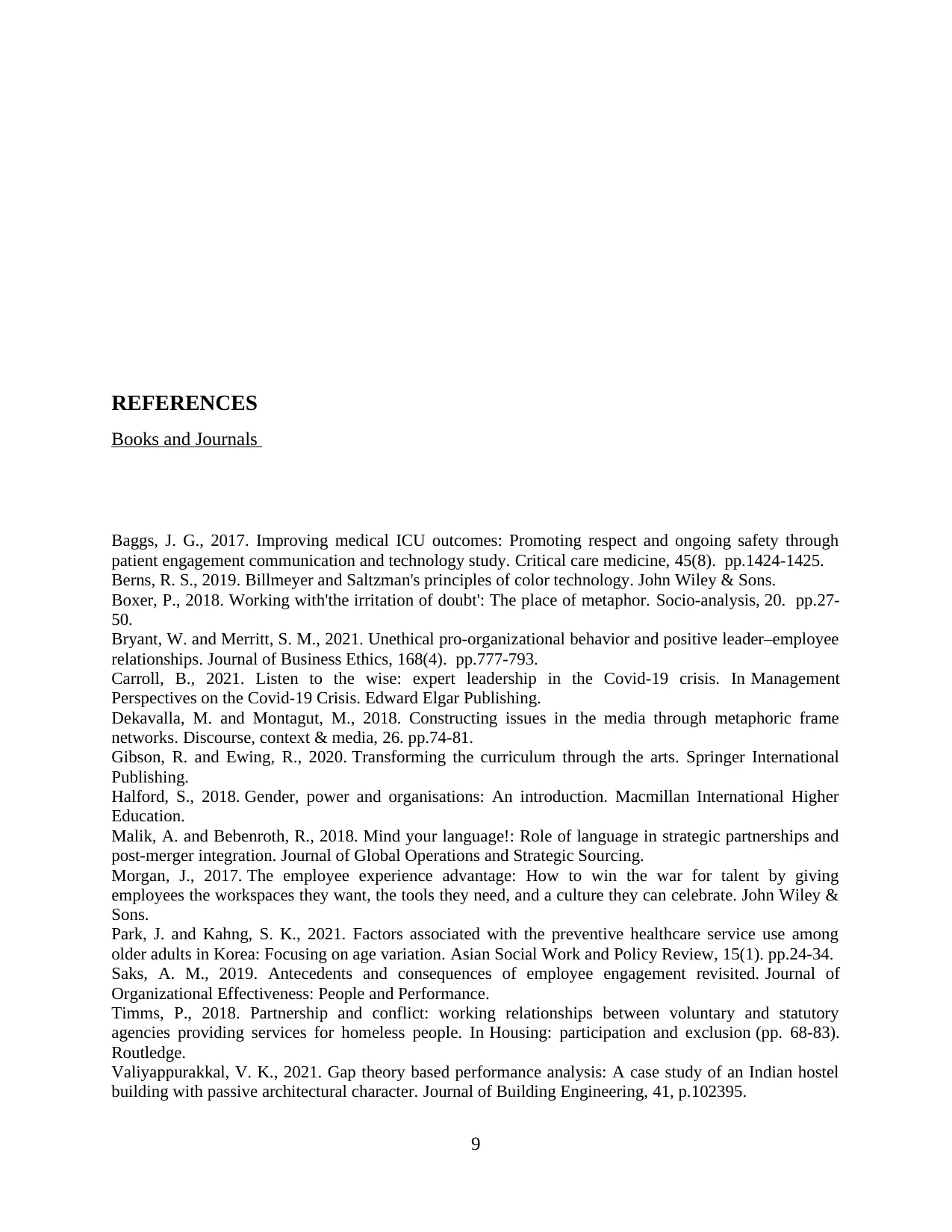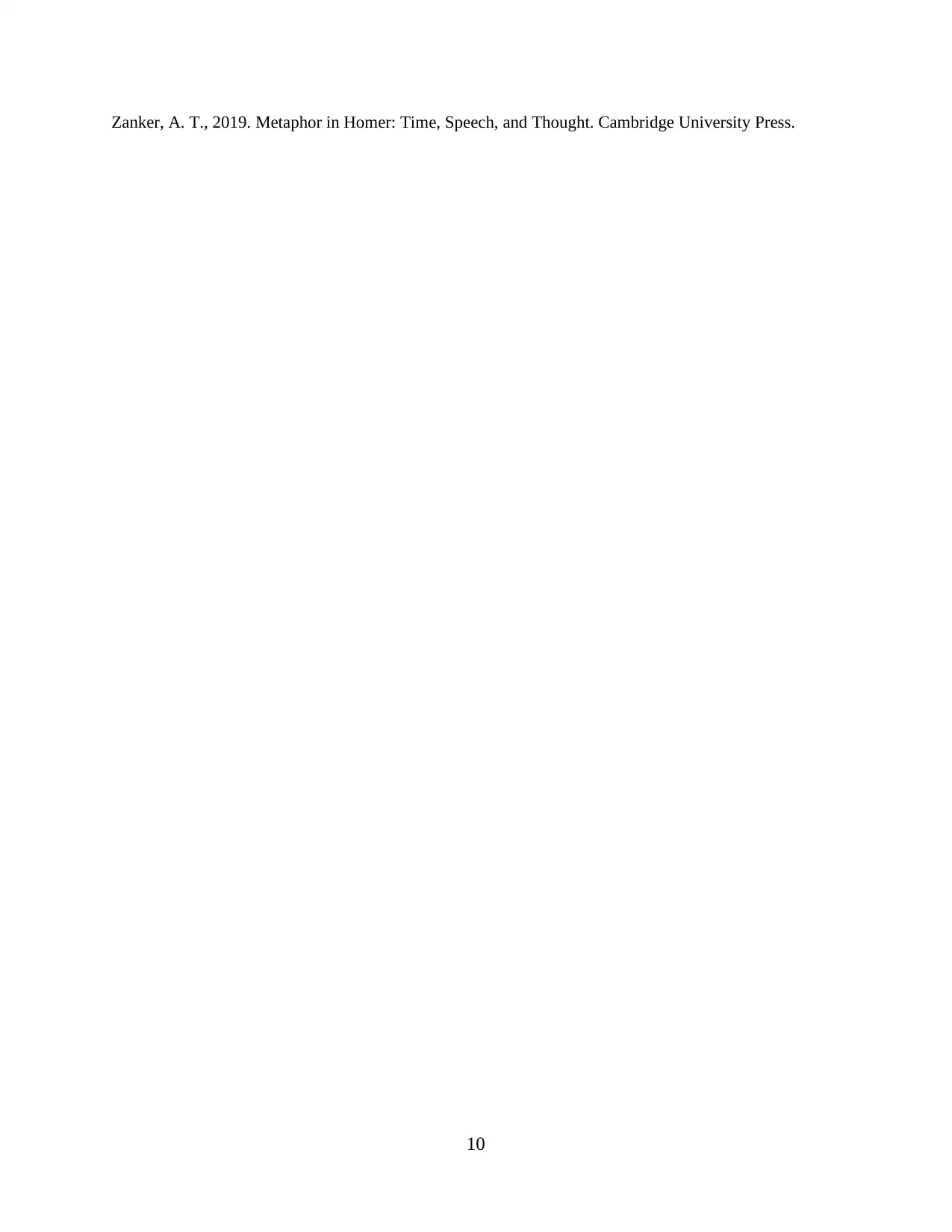This report on organizational behavior covers the attributes of a leader, examination of organizations using metaphors, leadership challenges and solutions during Covid-19, and how an organization determines its optimum structure. The report uses Tesco as an example and discusses various leadership styles, motivational theories, and communication gaps. It also explores different metaphors such as organizations as machines, organisms, brains, cultural systems, and political systems. The report provides solutions to leadership challenges during Covid-19 such as improving communication, encouraging morale, providing technological support, and enhancing the workplace. Finally, the report discusses how an organization can determine its optimum structure for maximum performance.
![[object Object]](/_next/static/media/star-bottom.7253800d.svg)
![[object Object]](/_next/static/media/star-bottom.7253800d.svg)
